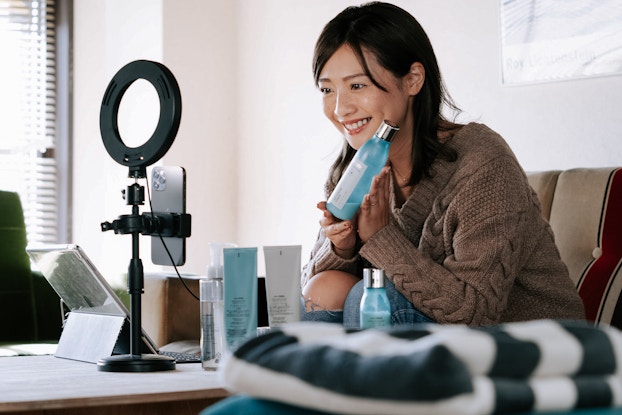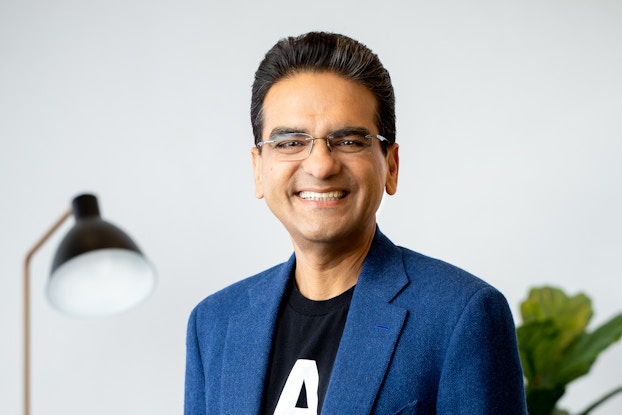
Why it matters:
- There’s a renewed focus on health and wellness because of COVID and as chronic illness soars, especially in the U.S.
- Indeed, the global wellness industry is robust, valued at $5.6 trillion in 2022.
- Amway’s business model taps into two growing trends: Its health-focused products are sold by a workforce of independent contractors, leaning into both the wellness and gig economies.
On the heels of the pandemic, and as chronic illness soars in the U.S., consumers’ appetite for health and wellness products has accelerated. At the same time, more Americans are now pursuing jobs where they can be their own boss over traditional ways of work. Last year, 39% of the workforce performed freelance work.
As the world’s largest direct selling company of health, wellness, beauty, and home products, and with a workforce comprised of independent contractors, Amway has carved out a niche that addresses both trends. In its fifth year now under leadership of the first non-family member to run the company, Amway is continuing to grow its direct-to-consumer business, especially in the U.S. Around 10% of its business is U.S.-based, said Amway CEO Milind Pant, versus 90% international.
“Today, a young person can earn money in so many different ways,” said Pant, who joined the company in 2019 after serving as President of Pizza Hut International and in executive roles at Unilever. “They can be a creator on TikTok, drive an Uber, start a small business, or come to a place like Amway. We make earning money a combination of good income and health.”
Nurturing ‘entrepreneurship in a box’
Founded by high school friends in Grand Rapids, Michigan, Amway launched its first product, a biodegradable liquid organic cleaner, in 1959. Sales took off, and the company continued to create and sell health, wellness, beauty, and home products.
Today, Amway develops products across several research centers and holds more than 900 patents. Sales in 2022 hit $8.1 billion, down from $8.9 billion in 2021, a drop Amway attributes to the strength of the U.S. dollar, the sale of Metagenics, Inc. (a non-direct selling entity), and the end of operations in Russia.
The company is part of the thriving health and wellness industry. In 2022, the global wellness economy reached $5.6 trillion.
What we provide is ‘entrepreneurship in a box. And our philosophy is that prevention is better than cure.Milind Pant, CEO, Amway
Over the years, Amway developed a model where Amway Business Owners, or ABOs, sell products directly to consumers for a percentage of the profits. These business owners also recruit others to sell. There are currently over one million owners across six continents and over 100 countries and territories.
It’s a strategy most commonly known as multi-level marketing (MLM), one that critics say can lead to people losing money or devolve into pyramid schemes. But there’s a big difference between legitimate MLM business opportunities and fraudulent pyramid schemes, Pant told CO—.
“Multilevel is a compensation model where every dollar earned is based on the products they sell,” he said.
The majority of Amway microentrepreneurs sell products as a side gig. Amway provides training, a purchasing platform, and support from the company’s more than 15,000 employees worldwide. The company helps business owners get certified in nutrition, too.
“What we provide is ‘entrepreneurship in a box,’” Pant said. “And our philosophy is that prevention is better than cure.”
Harnessing the power of community to sell products
At the core of Amway’s approach is harnessing community connections to sell products and increase collective health and well-being, according to Pant.
The superpower of Amway entrepreneurs is to build and nurture those communities, he said. He regularly meets with owners worldwide. Recently, Pant met with small groups of owners in Malaysia, and then 15,000 in a stadium in Bangkok.
“Retail stores can provide these types of products, but they cannot provide a sense of community where people help each other with their health and well-being goals,” said Pant. “That is the biggest differentiator for us.”

An Amway entrepreneur is an ambassador of sorts. A business owner often starts by using and benefitting from Amway products themselves. Then they recommend products to their network based on peoples’ individual health goals.
“Their role is to have healthy habits for themselves,” Pant said, “then to help their family, friends, and online communities achieve their goals. Community is so important because changing habits alone is tough — it requires immense willpower.”
This personal, community-based approach is a much needed one, adds Pant, given health outcomes in the U.S. in particular where 60% of the population has a chronic disease. He sees Amway as part of the solution to improved health and well-being as people age, touting the company’s strong and broad foundation in science.
Food is the best medicine, but supplements are key because no one eats a perfectly healthy diet, according to Pant. “We have a deep know-how of the power of plants that we’re combining with gut health to create innovative products to help people meet their health goals,” he said. “What we want is to see health span closer to life span.”
Investing in manufacturing, R&D, and AI to accelerate growth
Over the past seven years, Amway has poured millions of dollars into its vision.
It invested $335 million in new manufacturing and R&D facilities across the Americas, adding one million square feet to plants in Michigan, California, and Washington. It’s wrapping up a $35 million expansion at its Spaulding manufacturing facility in Ada, Michigan, where it will grow production volumes of its Nutrilite and beauty products, and it’s also modernizing its Ada corporate headquarters as part of a multi-year expansion plan.
Amway’s current focus is on developing additional products and programs around four core areas: healthy weight, fitness, healthy skin, and healthy aging. The company recently developed and launched a new anti-aging product in China.
But one of the biggest opportunities remains in the U.S., Pant said.
To facilitate that, Amway is investing in new technology, including generative artificial intelligence, and digital platforms for its entrepreneurs. In 2024, the company plans to roll out a single app for its business owners that makes running their operations more efficient.
“The opportunity is immense in America,” Pant said. “And we truly believe that we can play an important role in peoples’ health goals.”
CO— aims to bring you inspiration from leading respected experts. However, before making any business decision, you should consult a professional who can advise you based on your individual situation.
CO—is committed to helping you start, run and grow your small business. Learn more about the benefits of small business membership in the U.S. Chamber of Commerce, here.









